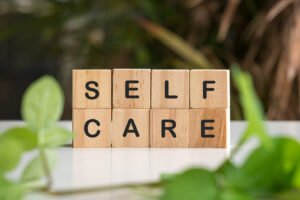Human relationships are complex, often shaped by our past experiences and emotional environments. Among the different types of connections we form, two categories often stand out: trauma bonds and healthy bonds. Trauma bonds arise in relationships marked by recurring cycles of negative behavior and emotional pain, leaving individuals feeling emotionally trapped. Healthy bonds, on the other hand, thrive on mutual respect, support, trust, and open communication.
Understanding whether you’re in a trauma bond or a healthy bond can help you make informed choices about who you allow close to you. It gives you the clarity to assess whether a relationship helps you grow or holds you back. Gaining that insight can guide you in building better emotional habits and relationships that support your well-being.
Characteristics of Trauma Bonds
Trauma bonds are grounded in cycles of emotional distress that can feel hard to break. These relationships often involve highs that feel extremely rewarding, followed by lows that are deeply painful. This rollercoaster creates a confusing emotional dependency.
Emotional highs and lows: You may feel euphoric during short positive interactions, then devastated during periods of neglect, conflict, or manipulation. These sharp contrasts make it difficult to leave the relationship, as you chase moments of connection.
Dependency and fear of leaving: People in trauma bonds often feel tied to the relationship, believing they won’t experience the same intensity or emotional connection elsewhere. This belief can lead to staying even when the relationship is harmful.
Manipulation and control: One partner may use control tactics like guilt, shame, or gaslighting to maintain dominance. These behaviors keep the other person off balance and dependent.
Acknowledging these signs might bring up tough emotions, but it’s the first step in breaking the cycle. Recognizing these patterns can help you start thinking about the kind of relationships you truly want and deserve.

Characteristics of Healthy Bonds
In contrast to trauma-driven dynamics, healthy bonds create stability, security, and mutual growth. These relationships are based on more than emotional intensity. They give you room to be yourself and bring out the best in both people.
- Mutual respect and support: In a healthy bond, both individuals value each other’s needs, perspectives, and boundaries. They show appreciation through words and actions, building each other up even during tough times
- Open communication: Partners don’t shy away from honest conversations. They talk about their feelings, resolve conflicts respectfully, and listen to understand instead of react.
- Consistency and stability: Rather than chaotic emotional swings, there’s steady reassurance. You know what to expect from the other person, and that reliability contributes to a sense of emotional safety.
Healthy relationships help you feel grounded and free. They don’t require constant emotional repairs. Instead, they give you the freedom to grow as a person while building something meaningful together.
How to Identify Unhealthy Patterns
Spotting unhealthy patterns in your relationships takes courage, but it’s a powerful way to protect your emotional health. Here are a few ways to start examining your current or past relationships:
- Do you often feel emotionally drained after interactions?
- Are your personal needs regularly dismissed or sidelined?
- Do you avoid speaking up due to fear of backlash or emotional fallout?
If the answer to any of these questions is yes, it may signal that you’re stuck in an unhealthy pattern. You’re not alone, and recognizing this doesn’t mean you’ve failed. It often means it’s time to ask for help.
A licensed trauma therapist can help you explore what these feelings mean, identify recurring dynamics, and make sense of your emotional responses. Support from professionals can also help you dig deeper into past experiences and use those insights to make healthier choices in future relationships.
Steps to Transition from Trauma Bonds to Healthy Bonds
Moving away from trauma-based connections to ones that feel safe and uplifting is possible. It takes time, self-awareness, and consistent emotional work, but each small step matters.
Seeking therapy: Talking with a therapist can help unpack emotional baggage, sort out confusing thoughts, and guide you toward healthy relationship tools.
Setting boundaries and practicing self-care: Learning to say no, prioritizing your mental wellness, and valuing downtime can help rebuild emotional strength. Building new, positive connections: Chances are, you’ll find support in places where trust, kindness, and balance are the norm. Positive relationships, whether through friends, groups, or community networks, can model what healthy attachments look like.
Building new, positive connections: Chances are, you’ll find support in places where trust, kindness, and balance are the norm. Positive relationships, whether through friends, groups, or community networks, can model what healthy attachments look like.
This transition won’t happen overnight, but each step you take allows you to reclaim your voice and start forming the kind of relationships that honor your needs and values.
Choosing Growth Over Familiar Pain
Letting go of trauma bonds can open the door to a more peaceful and fulfilling life. Understanding the difference between healthy and unhealthy bonds is one of the most powerful things you can do for yourself. It’s okay to take your time, to reflect, and to heal piece by piece.
You don’t have to figure this out alone. Mindful Mental and Behavioral Health PLLC is here to support you as you work toward building healthier, more meaningful relationships that align with your goals and emotional well-being.

Get Started with a Trauma Therapist in Portland, OR Today
Ready to move forward in creating healthier relationships? Explore how Mindful Mental and Behavioral Health PLLC can support you in overcoming emotional challenges. Our comprehensive services are designed to help you build stronger, more fulfilling connections. Learn more about trauma treatment with us today.
- Reach out to us to begin trauma counseling. Or, self-schedule an appointment here!
- Explore our blogs for more insights into trauma healing.
- Taking the first step is a brave thing to do. You deserve healthy, meaningful relationships.
More Mental Health Services Beyond Trauma Counseling in Portland, OR
Healing looks different for everyone, and your care should reflect that. At Mindful Mental and Behavioral Health PLLC, we offer more than just trauma therapy and PTSD treatment. Our team also provides bipolar disorder therapy, depression counseling, and anxiety counseling, with a focus on creating a warm, nonjudgmental space where you feel truly seen. If medication is part of your path, we offer personalized medication management to help ensure your treatment feels aligned and effective for your unique needs.




